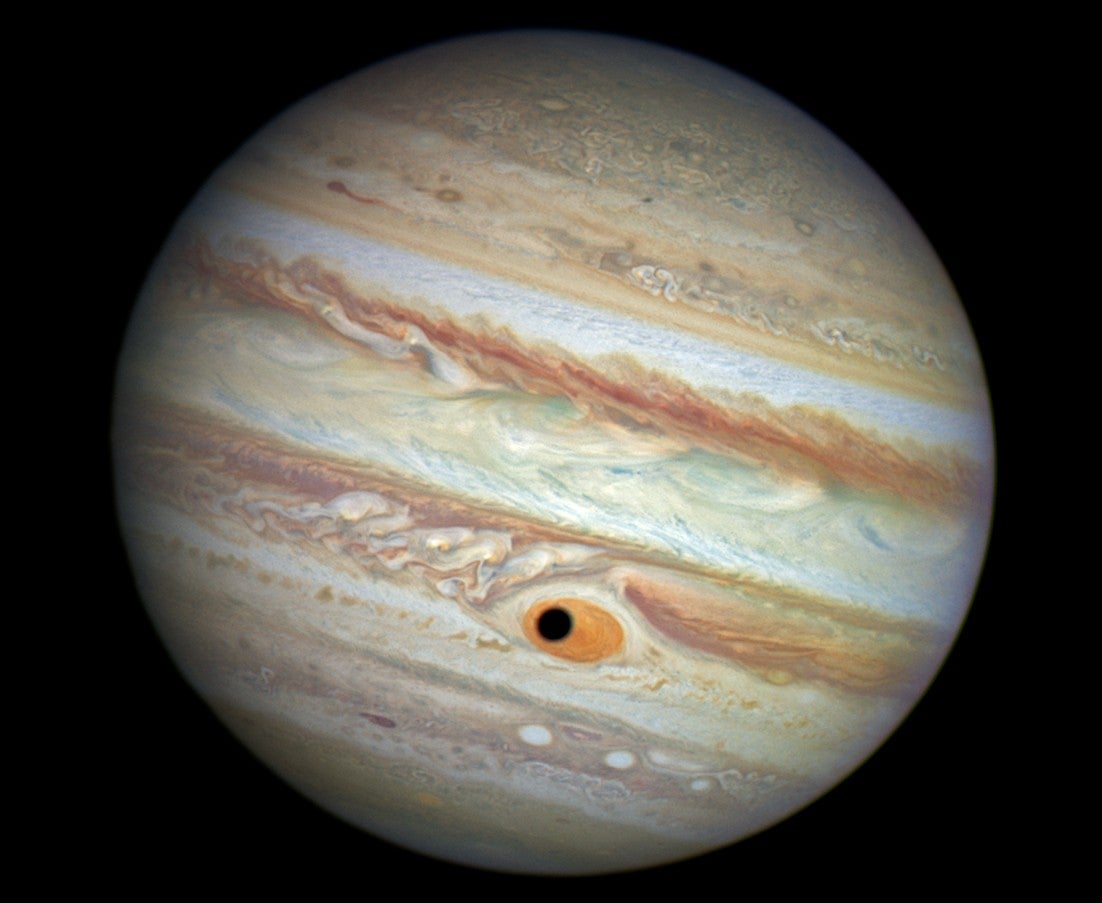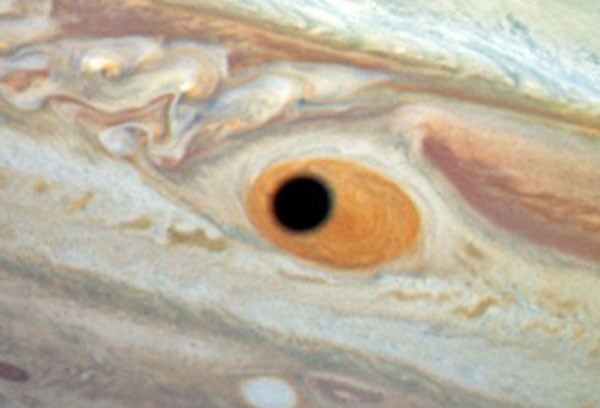Nasa catches Jupiter looking at Hubble telescope though giant cyclop's eye
“For a moment Jupiter 'stared' back at Hubble like a one-eyed giant Cyclops.”

Astronomers are used to peering into the cosmos to scrutinize distant stars and planets, but it’s not often that the cosmos stares back.
But in this fantastic image captured by Nasa’s Hubble Space Telescope that’s exactly what Jupiter appears to be doing.
The unusual shot was captured as the shadow of Ganymede, Jupiter’s seventh moon and the largest satellite in the Solar System, moved over the Great Red Spot.
This gigantic storm some 40,000km wide (that's large enough to fit three Earths side by side) has been a feature of the planet’s surface ever since human’s first observed the planet using telescopes, with the first description made by Gian Domenico Cassini in July 1665.

However, studies from the mid-1990s onwards have found that the GRS is slowly shrinking, and Hubble was busy monitoring the storm when it captured the image on 21 April.
Nasa's scientists are still searching to explain why the massive anti-cyclonic storm (one formed of high pressure) may finally be abating.
“For a moment,” said Nasa in a press release, “Jupiter 'stared' back at Hubble like a one-eyed giant Cyclops.”
Join our commenting forum
Join thought-provoking conversations, follow other Independent readers and see their replies
Comments